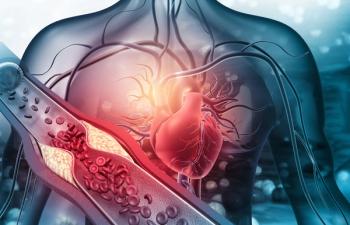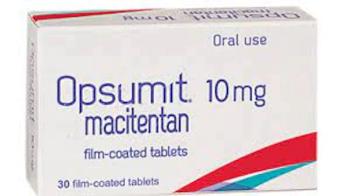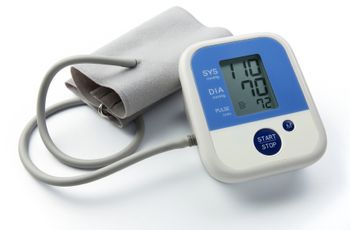
The pilot program for pulmonary arterial hypertension (PAH) was carried out at a single center in the Netherlands.


The pilot program for pulmonary arterial hypertension (PAH) was carried out at a single center in the Netherlands.

Patients who have pulmonary arterial hypertension (PAH) often do not feel better after treatment, even if they meet clinical endpoints for improvement.

Pulmonary arterial hypertension (PAH) is the only major diagnostic indication for transplantation that is not a parenchymal pulmonary process.

If approved by the FDA, sotatercept would be the first therapy that acts directly against the cause of the disease.

Researchers set out to examine the effects of sodium nitroprusside on the thromboxane-mediated contraction and nitric oxide (NO)-independent relaxation pathways and on reactive oxygen species accumulation in pulmonary artery smooth muscle cells.

A Danish study of nationwide registries estimated a 39% greater risk of high refractive error among children of mothers with hypertensive disorder of pregnancy (HDP), a complication that affects 5% to 10% of pregnancies.

These insights represent the first characterization of risk factors for respiratory failure–related hospitalization among patients with sarcoidosis‐associated pulmonary hypertension (SAPH).

Subsequent testing revealed the presence of the variant in the patient’s siblings, also underscoring the importance of counseling family members who have pulmonary arterial hypertension (PAH).

Most patients with chronic thromboembolic pulmonary hypertension (CTEPH) said they can go about their daily activities without restriction, the authors found, because of gains in functional status and quality of life (QOL).

Patients with pulmonary arterial hypertension (PAH) related to connective tissue disorders (CTDs) and patients with PAH related to another condition accrued higher costs and higher health care resource use (HRU) vs patients who had CTD without PH.

Although they note that their risk combination model needs validation, investigators argue that their insights should guide recommendations for risk stratification and management of these patients.

Right ventricular (RV) dysfunction has previously been linked to symptoms and mortality in pulmonary hypertension (PH), as well as in other conditions, and RV function plays an important role in disease risk and potentially in intensification of pulmonary arterial hypertension treatment.

The researchers noted that their study is the first to assess the ability of noninvasive variables, both resting- and exercise-based, to identify pulmonary hypertension in interstitial lung disease.

The 72nd American College of Cardiology Scientific Session Together With the World Congress of Cardiology (ACC.23/WCC), runs from Saturday to Monday in New Orleans, Louisiana.

Study findings offer insight into how exercise intolerance varies among subgroups of pulmonary arterial hypertension associated with congenital heart disease (PAH-CHD), as previous data have characterized impaired exercise tolerance among PAH-CHD as a whole.

Having a diagnostic model that leverages artificial intelligence could fill a gap in the pulmonary hypertension (PH) diagnostic pathway, as there are currently just 2 validated screening algorithms for PH.

The long time to diagnosis is consistent with data pointing to pulmonary arterial hypertension (PAH) often being misdiagnosed as asthma, said the researchers, adding that the findings from their retrospective study provide valuable insight into where the diagnostic pathway lags.

The 4 biomarkers linked to copper metabolism in pulmonary arterial hypertension (PAH) were DDIT3, NFKBIA, OSM, and PTGER4.

A small study conducted in China suggests pregnant women with idiopathic pulmonary arterial hypertension (iPAH) are at higher risk of maternal mortality compared with women with certain other types of pulmonary hypertension (PH).

Patients with pulmonary arterial hypertension (PAH) were more likely to die or be hospitalized if they contracted COVID-19 but were less likely to die from COVID-19 if they were vaccinated against SARS-CoV-2.

This new study from Iran investigated outcomes following treatment for pulmonary arterial hypertension (PAH) with macitentan compared with bosentan.

The most-read articles in pulmonary arterial hypertension (PAH) for this year ran the gamut of special-interest areas: from treatment costs to pediatric PAH to high-risk patients.

For this analysis, the Japan Pulmonary Hypertension Registry provided data from 2008 to 2021 on patients with diagnosed portopulmonary hypertension (PoPH).

The study investigators wanted more data on long-term outcomes in pediatric patients following implantation of a transcatheter Potts shunt (TPS) for treatment of severe pulmonary arterial hypertension (PAH).

Researchers investigated outcomes following implementation of remote care that targeted effective control of hypertension, or elevated blood pressure (BP), and cholesterol management.

259 Prospect Plains Rd, Bldg H
Cranbury, NJ 08512
© 2025 MJH Life Sciences®
All rights reserved.
